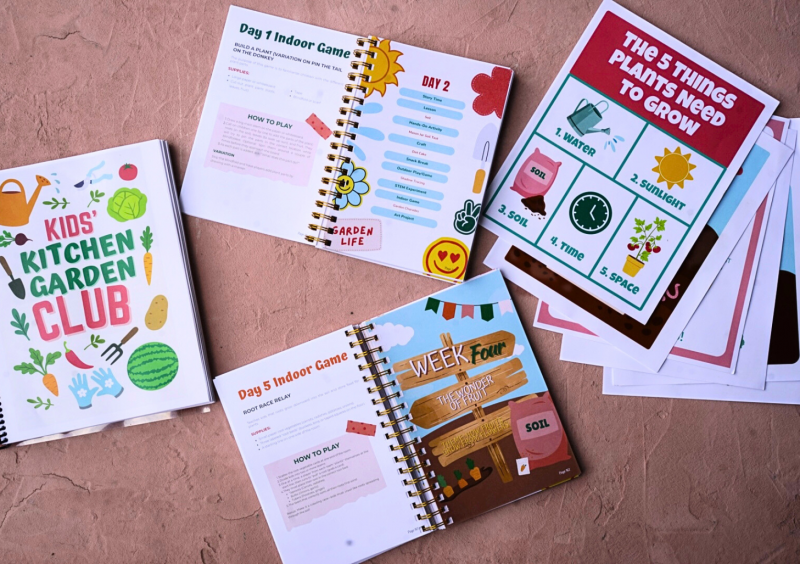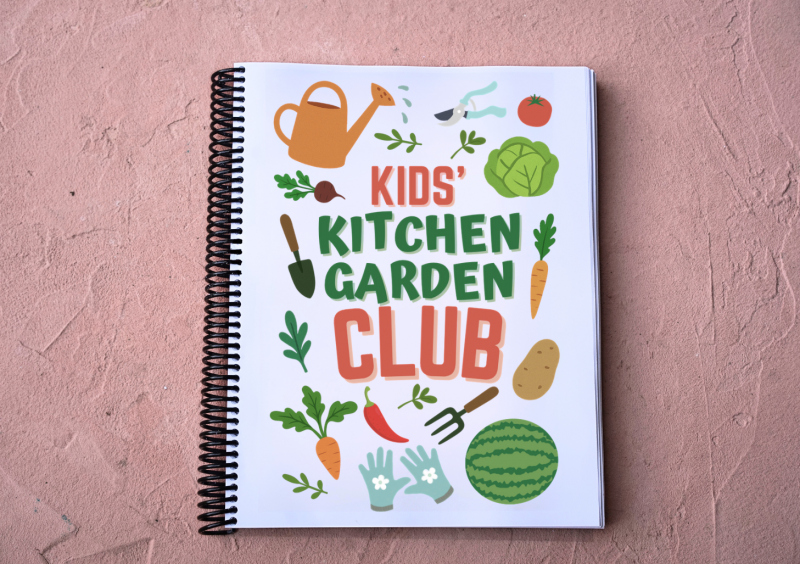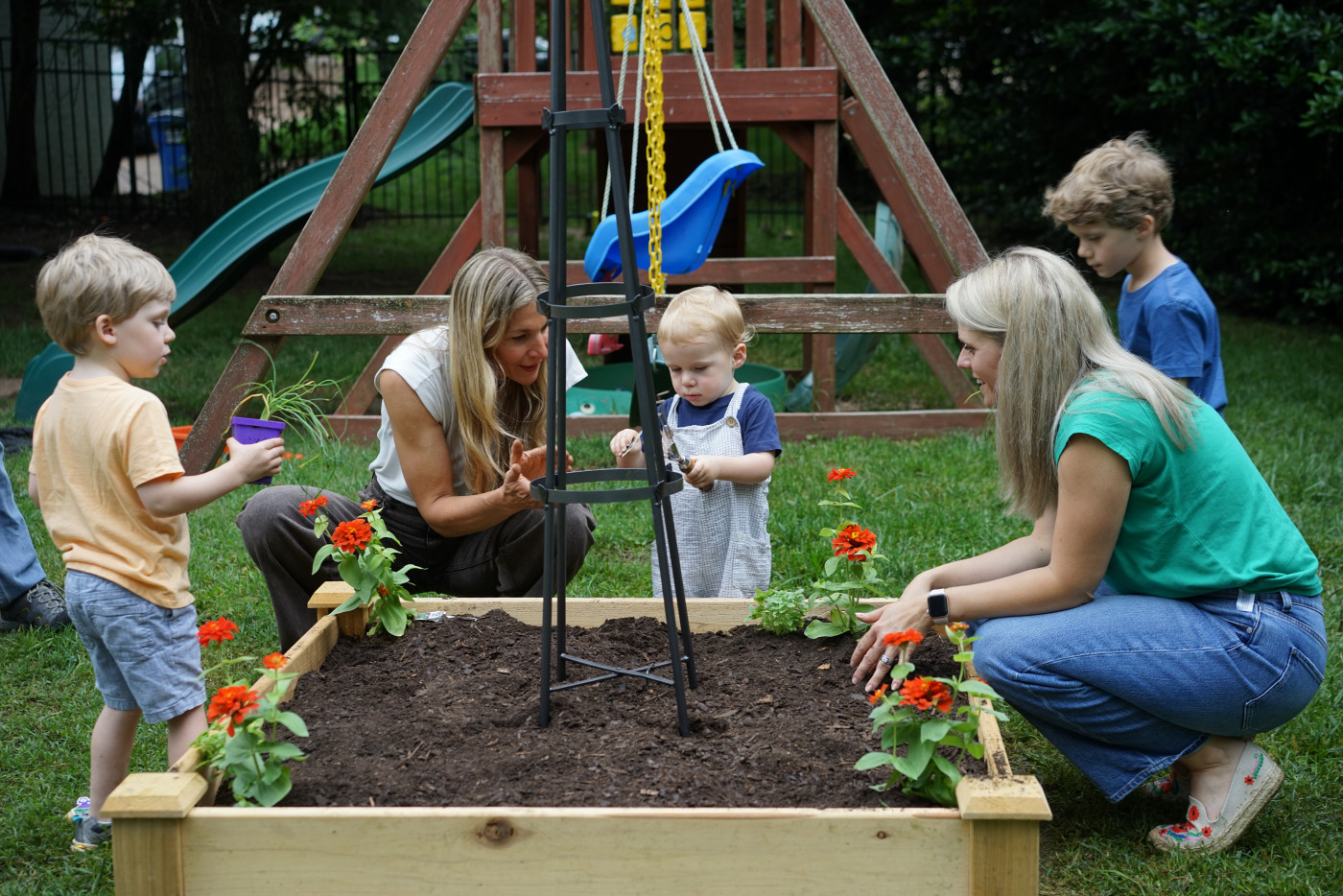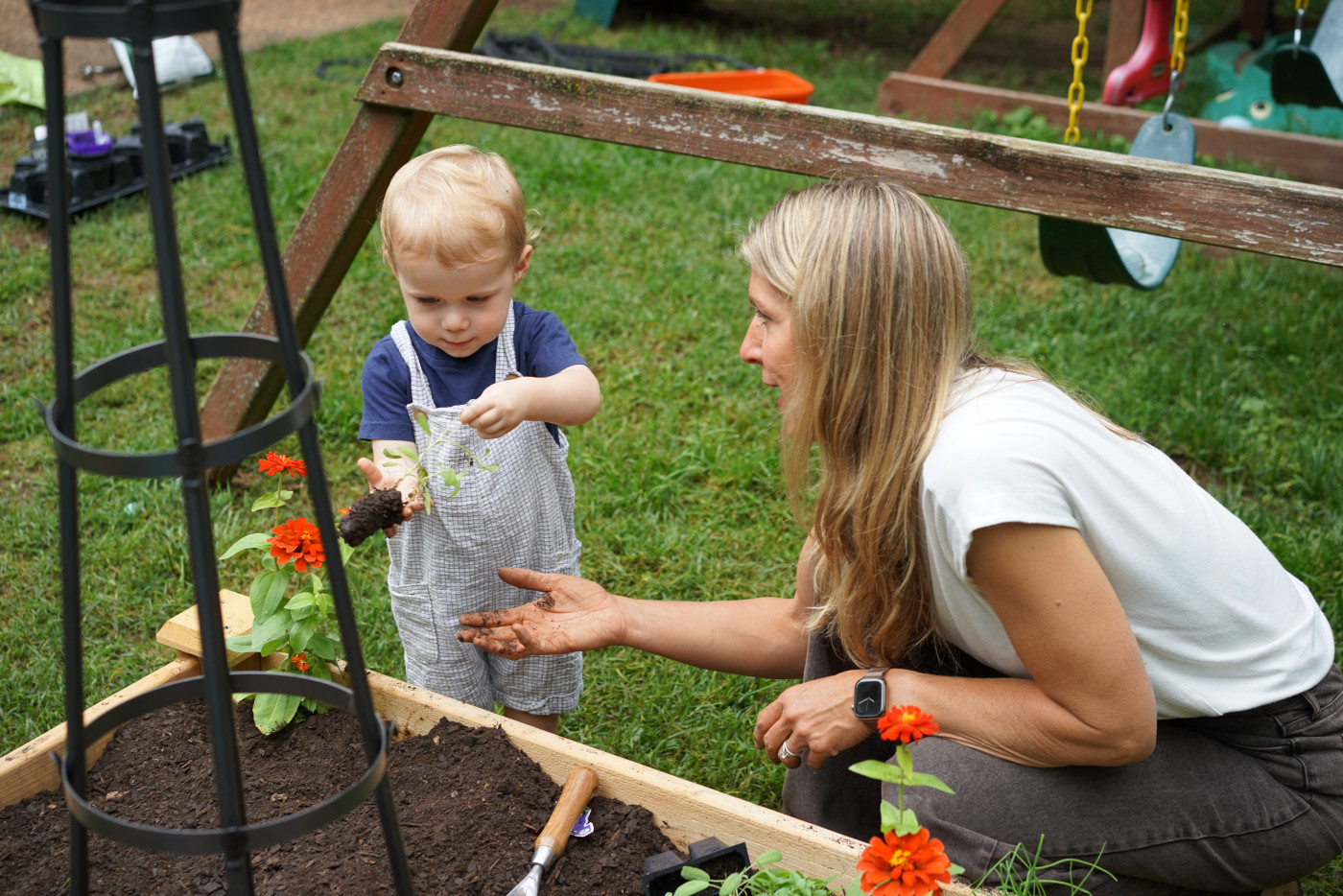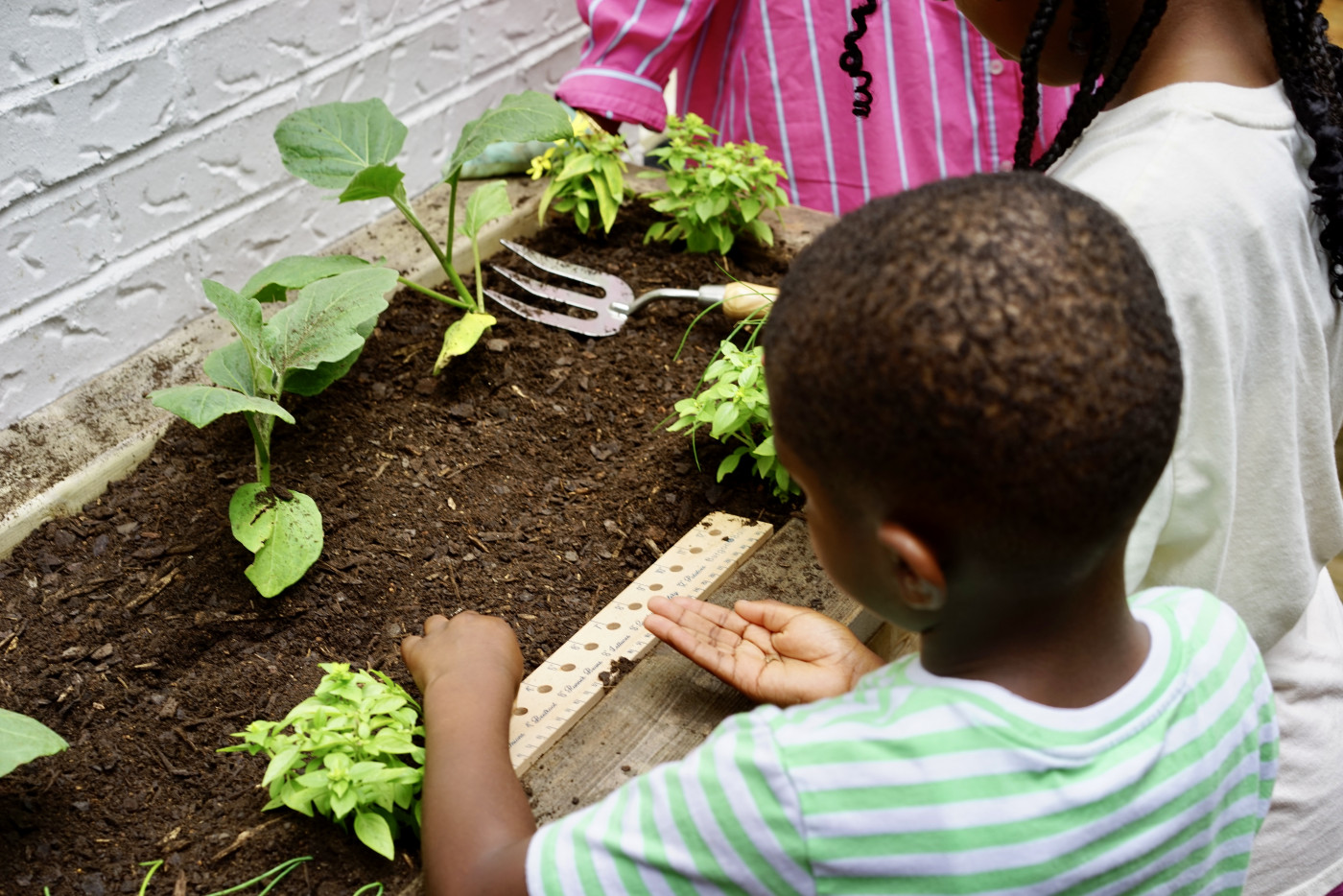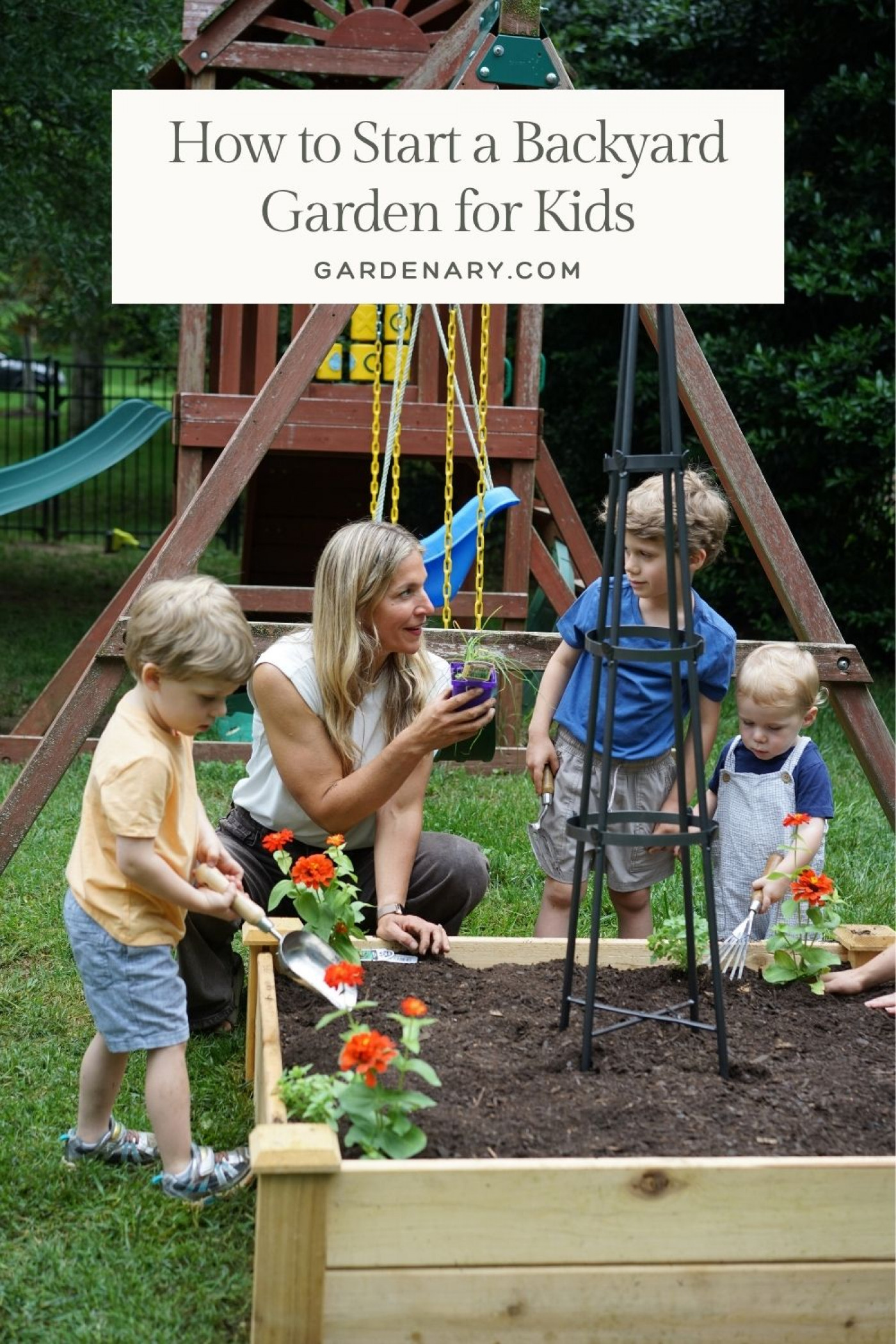Looking for a meaningful way to entertain your kids this summer? Tell them to turn off those screens! Starting a backyard garden might be just the thing to keep them engaged.
My kids are teenagers now, but I still remember how we used to garden together—tiny hands planting seeds and faces lighting up at the first sprout. Those early garden days gave us so many sweet moments, and I know they planted something lasting in all of us.
Don't let time pass you by! If the idea of building a garden from scratch feels overwhelming, don’t worry. With a little planning, you can create a beautiful, functional space that you and your kids will love. In fact, with the right setup, you can involve children of all ages.
Gardening with preschoolers, kindergartners, and young children is packed with learning, movement, and connection to nature. Whether it’s their first time planting seeds or they’ve helped you in the garden before, young gardeners thrive when they get their hands in the soil and take part in the magic of growing things.
Step 1: Choose the Location for Your Children's Garden Project
The first step to creating a successful backyard garden for kids is choosing the right spot for your raised bed. Select a sunny location that’s close to where your kids already play; the closer the garden is to their daily activities, the more involved they’ll naturally be. Creating a garden in a space where they already feel comfortable will encourage them to participate right away.
Weaving gardening into your family’s daily rhythm—rather than treating it as a separate chore—helps make it a lasting part of everyday life. Adding your new garden next to the backyard playground, right outside the kitchen door, or beside their sandbox, allows your kids to easily access the garden and watch it grow.
Step 2: Gather Your Materials
It's time to gather the materials that will bring this kids' activity to life! Whether you're building raised beds from scratch or assembling one of our super easy tool-free kits, having the right supplies on hand will make installation faster, easier, and more fun, especially if kids are joining in. Start by measuring your total garden square footage so you can calculate how much wood, soil, and structural support you’ll need. For durability, select thick, untreated, locally sourced lumber like cedar or redwood.
Raised Bed Supplies Checklist:
- Untreated wood boards (like cedar or redwood)
- Wood screws or galvanized corner brackets
- Drill and screwdriver
- Measuring tape
- Saw (or have boards pre-cut at the hardware store)
- Level
- Weed barrier paper (optional, for the bed base)
- Staple gun (if attaching weed barrier)
- Soil
- Seeds or plants
- Gardening tools
- Trellis
OR
- Our tool-free raised bed kit
- Soil
- Seeds or plants
- Gardening tools
Step 3: Prepare the Ground
Before your kids come outside, prepare the ground beneath your garden space. This is an important step that will help with weed prevention in the future. Trim or remove grass, mark your planting area, and lay down a weed barrier like X-board to keep unwanted plants from popping up later. Taking care of this prep work beforehand sets a strong foundation for a healthy, low-maintenance garden season.
Step 4: Construct the Raised Bed
Begin by cutting your boards to the desired length for your space. You can cut them yourself, or many stores that sell wood will cut them for you. Next, measure the thickness of your boards and mark them to indicate where they will line up when attached. Then, use your framing hardware as a guide—mark it, drill holes for the framing angles, and then attach it to create two sturdy end panels. These panels are then joined by lining up, marking, drilling, and attaching the remaining side boards to form a U-shape.
After sliding the final panel into place, you repeat the process to secure it, then tighten all bolts to stabilize the structure. Once assembled, the bed can be moved into place and leveled. If you're building on a budget, check out our article How to Build a Raised Garden Bed for Just $100.
Step 5: Let Young Gardeners Help with Planting
It’s finally time for your kids to join the fun! Let them get their hands dirty!
With help from an adult, kids can assist with filling the raised bed with soil. Quality soil is one of the most important aspects of a garden. It determines your plants' potential from the start. Be sure to select the right type of soil, a nutrient-rich one with a mix of textures and organic matter.
When choosing plants for your kids’ garden, start with easy, colorful, and edible options. Flowers, herbs, and fruits are all great choices for young gardeners. Let them plant herbs like basil and dill, followed by kid-friendly fruits and vegetables like cucumbers, corn, pumpkins, and watermelon.
Don’t stress about perfect seed placement. Let kids plant freely, and you can gently adjust as needed afterward. The first time I planted lettuce, I handed the packet to my kids and let them sprinkle to their heart's content!
For a little extra garden pizzaz, you can add a climbing structure, like a trellis or a bamboo teepee, which makes the garden more interactive and exciting as the plants grow tall. It's also aesthetically beautiful as it adds a focal point to your layout.
Labeling each plant is an important part of the process. Plant markers help your children remember where everything is planted, making it easier for them to learn plant names and track growth week by week. We have instructions for children's gardening activities, including how to make your own garden labels, in our Kids' Kitchen Garden Club book. We offer a curriculum full of fun ideas, lessons, crafts, and games for your kids to enjoy. You can follow the structured format or pick and choose what's right for your family.


Only the best for our kids!
Don't miss a thing! Check out our easy garden kits, kids' activities book, gardening tools, and more!
Step 6: Teach Kids How to Care for Their Garden
Gardening with kids teaches them how to care for and maintain their little garden space. Explain how watering, checking plant growth, and watching for pests are all part of being a successful gardener. Kids quickly learn responsibility and patience as they watch and water their plants each day.
You don’t have to wait long for kids to enjoy their first harvest! This is a highly rewarding part of gardening for children. Herbs like basil, sage, and chives can be picked after a short amount of time, giving them the reward of tasting something they grew themselves.
Adding worm castings also offers a perfect teaching moment about how worms help keep the soil healthy and support plant growth. You can teach your kids even more about helpful garden insects with our Kids' Bug Guide, which is included with our Kids' Kitchen Garden Club book.
Memories Are Forever
Backyard gardening with kids builds essential life skills and connects your family to nature. These hands-in-the-dirt moments foster patience, curiosity, and a sense of responsibility. Most of all, they become treasured memories that your children will carry with them for a lifetime.
10 Engaging Garden Activities for Kids This Summer
Turn your backyard into a fun, hands-on learning space with 10 easy and creative garden activities designed just for kids! Whether you’re new to gardening or already growing, this printable guide will help your little ones dig in, explore nature, and fall in love with growing their own food.

Click on the Pinterest icon below to save this post for later!
Join in on the summer fun by creating fun and educational opportunities for your kids. Our Kids' Kitchen Garden Club book includes garden-themed curriculum like lesson scripts, crafts, activities, games, experiments, and more!
